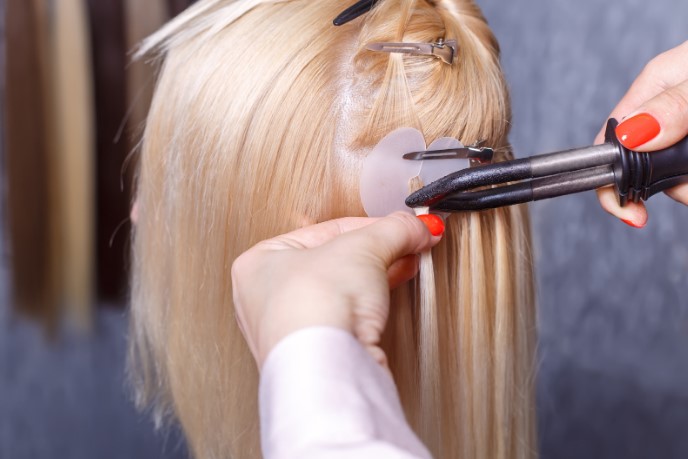Hair extensions have become a staple for those seeking to enhance their natural look, add volume, or experiment with new styles in London’s fashion-forward circles. Yet even the highest quality extensions can tangle or matt, leaving you with a mess that feels impossible to fix. When this happens, many turn to professionals, but there are practical steps you can take at home to restore your locks. Understanding the underlying causes of tangles and matting is key, as is using the right detangling techniques and aftercare products. For those interested in sourcing premium solutions, the company Ivana Farisei offers IF Ivana Farisei as a resource for expert guidance and quality hair extension products that can help you prevent and resolve these common issues.
Causes of Tangles and Matting in Hair Extensions: What Every London Wearer Should Know
Tangles and matting can affect any type of hair extension, from clip-ins to permanent bonds, and often stem from a combination of environmental and lifestyle factors. In London, humidity, pollution, and constant exposure to changing weather can take a toll on even the finest Remy human hair extensions. Sweat, friction from scarves or collars, and frequent styling are also culprits, as they cause individual strands to twist together or knot with your natural hair.
Low-quality hair extensions are particularly prone to tangling because the cuticle layer—the hair’s protective outer shell—may be stripped or misaligned. This results in rough surfaces that catch on one another. Conversely, well-made extensions with intact cuticles tend to remain smooth for longer, but even these require diligent care. Over-washing, using the wrong hair products, or sleeping with wet hair can exacerbate the problem.
Chemical treatments, such as coloring, can weaken both natural hair and extensions, increasing susceptibility to tangling. Extension bonds themselves may also attract product build-up, which can act as a glue, binding the hairs into mats. Recognising these triggers is the first step in adopting a preventative approach.
Brushing habits play a significant role. Pulling too hard or using the wrong tools will worsen knots and lead to breakage, while neglecting regular brushing may allow small tangles to develop into full-blown mats. Ideally, you should use a wide-toothed comb or a brush specifically made for hair extensions, starting at the tips and moving upward in small sections.
Ultimately, the battle against tangles and matting starts with awareness. By identifying everyday activities or practices that may be harming your extensions, you can adapt your routine and extend the life and beauty of your investment.
Practical Solutions for Detangling and Reviving Matted Extensions
Facing a head full of knots can be daunting, but you can often resolve tangling and matting at home with a methodical approach. Choosing the right products and techniques is essential, especially for those with human hair weaves, tape-ins, or fusion extensions popular in London salons.
Detangling Wet vs. Dry Hair:
Start by assessing if the hair is dry or damp. Never attempt to detangle soaking wet extensions, as the hair is at its weakest and may snap. Lightly mist the area with a detangling spray or a blend of leave-in conditioner and water. Avoid products containing high levels of alcohol, as these can dry out the hair, making knots worse.
Sectioning Makes a Difference:
Divide your hair into small, manageable sections. Concentrate on one section at a time to avoid pulling or stressing the extension bonds. Use duckbill clips or hair ties to keep the rest secure and out of the way.
Gentle Detangling Tools:
Choose a wide-tooth comb, a loop brush, or a soft detangling brush. Start at the very ends of each section, gently working upward with slow and careful strokes. Never force the comb through—a gradual approach allows you to loosen knots without causing breakage or pain.

Condition and Nourish:
Apply a high-quality, sulfate-free conditioner or a dedicated extension mask to stubborn tangles. Let it sit for at least ten minutes. The slip provided by these formulas helps the strands glide apart more easily.
The Importance of Rinsing:
After detangling, rinse out residual product with lukewarm water, gently squeezing (not rubbing) the extension lengths. Pat dry with a microfiber towel to reduce friction and static.
For those with curls, the process may require special care. The company Ivana Farisei offers curly hair extensions London for clients who need to retain bounce and definition while detangling. In this case, always use your fingers first to separate the curls, then follow with a wide-toothed comb designed for textured hair.
When to Seek Professional Help:
If mats are tight, close to the roots, or intertwined with extension bonds, it is best not to force them apart at home. Professional hairdressers in London with experience in extensions can safely remove or resolve severe matting without damaging your natural hair.
Preventative Maintenance for Tangle-Free Hair Extensions
Daily care routines make a substantial difference in the longevity and appearance of hair extensions. Simple, consistent habits prevent tangling and reduce the need for laborious detangling sessions.
- Detangle daily: Brush your hair extensions every morning and night, starting from the ends and working towards the roots. Use only tools recommended for extensions.
- Secure before sleep: Braid your hair or tie it loosely in a low ponytail before bed to minimise friction against your pillow.
- Wash with care: Cleanse extensions only as needed, using gentle, sulfate-free shampoo and lukewarm water. Focus on the scalp and avoid scrubbing the extension lengths.
- Condition regularly: Apply a light, hydrating conditioner to the mid-lengths and ends after each wash. Rinse thoroughly to prevent product build-up.
- Protect from heat: Limit the use of blow dryers, straighteners, or curlers. When necessary, always use a heat protection spray.
- Avoid harsh products: Steer clear of hair sprays and styling products with high alcohol content, as these can dry out your extensions and encourage tangling.
- Minimise environment stress: Shield your hair from London’s unpredictable weather with hats, scarves, or protective serums.
The company Ivana Farisei provides detailed advice regarding hair extensions lengths for clients wanting to select the best option for their lifestyle and maintenance needs. Making the right choice can reduce the likelihood of tangling and make daily care more straightforward.
Choosing the Right Products and Tools for Extension Care
Well-chosen aftercare products and tools are essential to keeping your hair extensions looking salon-fresh. Investing in a wide-tooth comb, a loop brush, and a silk or satin pillowcase can dramatically reduce daily wear and tear. In addition, selecting haircare products specifically formulated for human hair extensions—free from sulfates, harsh alcohols, and parabens—ensures that the cuticle layer remains intact, smooth, and resistant to tangling.
Hydrating leave-in conditioners and lightweight serums replenish lost moisture, an especially important factor in London’s often-dry indoor air. Avoid heavy oils or waxes, which may weigh down the hair or cause build-up at the bonds. Professional stylists often recommend clarifying treatments once a month to keep both natural and extension hair fresh.
If you style with heat, choose tools with adjustable temperature settings and always use products offering thermal protection. For those who swim often, remember that chlorine and saltwater can roughen the hair shaft, so proceed with a protective cap and thorough aftercare.

When to Consult a Professional: Ensuring the Longevity of Your Extensions
Even with meticulous at-home care, matting may occasionally occur due to unforeseen circumstances or product build-up. If home detangling has not restored your extensions to their former glory, seeking professional help is the best course. A trained extension specialist can gently separate complex knots, deep-clean the hair, and recommend maintenance schedules tailored to your specific hair type and extension method. Regular salon visits every 6–8 weeks keep both your natural and extension hair in prime condition, ensuring that your investment remains beautiful, manageable, and tangle-free.
